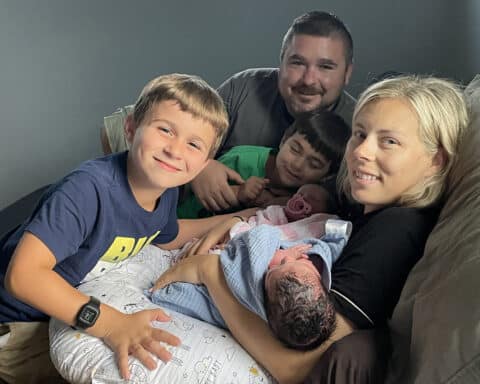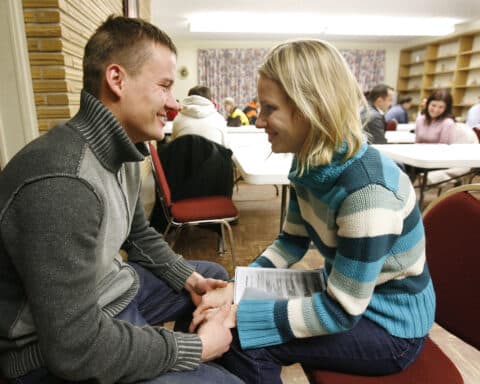In early September, NPR reported that a change in student health services at Oberlin College in Oberlin, Ohio, would leave students without ready access to contraceptives. Oberlin is not a Catholic college, so why was this change brought about?
Oberlin, like many colleges and universities, outsources student health to an outside provider. The change in what the college provided students came when, on Aug. 1, the college contracted with Harness Health Partners — a subsidiary of Bon Secours Mercy Health, a Catholic health care network — to run the student health center.
As a Catholic health care provider, Bon Secours follows the Ethical and Religious Directives for Catholic Health Care Services (ERDs) issued by the U.S. Conference of Catholic Bishops. The directives clarify Catholic guidelines for what is — and is not — morally licit medical care. For example, according to the ERDs, Catholic hospitals “may not promote or condone contraceptive practices”; similarly, elective sterilization procedures, such as tubal ligations or vasectomies, are prohibited.
When students at Oberlin were informed that contraceptive access would be restricted because of the provisions of their Catholic-owned student health provider, they were outraged. But the story here is not the controversy at Oberlin, so much as it is the broader pressure Catholic hospitals are facing following the Supreme Court’s recent decision in Dobbs v. Jackson, which overturned the national legalization of abortion provided for in Roe v. Wade.
In the post-Roe era, when talk of so-called reproductive rights has dominated national attention, Catholic health networks are facing increasing pressure to make contraceptives and like medical procedures more readily available. Opponents of the Church and advocates for abortion, contraceptives and the like are more and more frequently casting Catholic institutions as “refusing” or “limiting” care.
According to a 2020 study by Community Catalyst, four of the United States’ 10 largest health systems are Catholic. These systems continue to grow. As this study reports, “through mergers, acquisitions, business partnerships and expansion into new types of care, these systems are extending the reach of Catholic health restrictions across the country.”
On the contrary, no Catholic should say that a Catholic health system restricts or limits care. The guidelines issued by the USCCB offer the frame and foundation for Catholic health care: “The mystery of Christ casts light on every facet of Catholic health care: to see Christian love as the animating principle of health care; to see healing and compassion as a continuation of Christ’s mission; to see suffering as a participation in the redemptive power of Christ’s passion, death and resurrection; and to see death, transformed by the Resurrection, as an opportunity for a final act of communion with Christ.” Our faithful imitation of Christ calls us to run to serve the sick, to alleviate suffering, to offer the compassionate love and mercy of the Lord to all in need.
This mission is ours. To serve the sick belongs to laity, clergy and religious alike by virtue of our baptism. And so whenever we offer medical care, we do so according to the tenets of the Gospel. The teaching of Jesus and his Church is our motive, our mission, our guiding light.
And out of this urgency of service to Jesus and to those who are sick — in whom we find Our Lord (cf. Mt 25) — Catholics established hospitals throughout our country as our nation grew and developed. These hospitals and today’s Catholic health care networks owe a great debt to the religious sisters who built, staffed and developed hospitals in our country, from our biggest cities to the most remote counties. That legacy lives on today, where in 52 regions Medicare and Medicaid services have identified that the only local hospital (“sole community hospital”) is a Catholic hospital.
Controversy comes, no doubt, in part because patients are not aware that the USCCB’s guidelines govern patient care in Catholic hospitals. And here is where plenty of lay Catholics can have an extraordinary impact. Catholic physicians, nurses and health care professionals can transform a patient’s experience of health care by clearly explaining, rather than subverting, the Church’s teaching. Many patients will not know the options actually available to them. And rather than accepting the false narrative that Catholics “deny care,” faithful Catholics can help animate the larger sense and spirit of the hospitals, clinics and medical groups where they are employed.
Medicine can be evangelical. The growth of Catholic reproductive clinics, such as the Tepeyac physician’s group in Virginia and Fertility and Midwifery Care Center in Fort Wayne, Indiana, demonstrate the interest and need of vibrant, scientifically rigorous, medicine.
Symbols, such as prominently displayed crucifixes, names, ready spiritual resources such as the availability of Mass, Catholic prayer cards, pamphlets and books, and rosaries for distribution are all part of the clear proclamation of Catholic identity and care.
The practice of our Catholic faith begins in the sacramental life, but it doesn’t end there. To live out our faith, we cannot be resigned to staying within the four walls of our churches. We must serve the sick, the suffering and the dying. And we must serve them as Catholics.
Our Sunday Visitor Editorial Board: Father Patrick Briscoe, Gretchen R. Crowe, Scott P. Richert, Scott Warden, York Young





